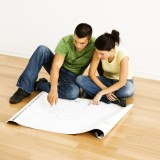Read this ebook for free! No credit card needed, absolutely nothing to pay.
Words: 17002 in 7 pages
This is an ebook sharing website. You can read the uploaded ebooks for free here. No credit cards needed, nothing to pay. If you want to own a digital copy of the ebook, or want to read offline with your favorite ebook-reader, then you can choose to buy and download the ebook.


: Scientific American magazine Vol 2. No. 3 Oct 10 1846 The Advocate of Industry and Journal of Scientific Mechanical and Other Improvements by Various Porter Rufus Editor - Science Periodicals; Technology Periodicals Scientific American
Messrs. Hartshorn, Payson & Ring entered at the Patent Office, September 3d, an improved stove, in which they claim the combination of the common wood stove and cylinder coal stove, so that the coal may be burned alone, and the draught so arranged as at the same time to heat the wood stove with the same heat, and if wood alone should be burned, then the draught should be so managed and arranged as at the same time to heat the side radiators and coal cylinders. A minute description of this improvement, is not, in this place, essential.
We have never been able to understand the reason why iron has so long been neglected as a covering for roofs, but are gratified to learn that Mr. Wm. Beach, of Troy, N. Y., has invented and patented a mode of using cast iron plates for covering roofs. They are about one foot square, and are made to fit one into another, so as to render the roof water tight, by applying white lead to the joints. It can be afforded at 16 cents the square foot, and probably may be so far improved as to cost no more than slate, and will be much more permanent and safe. We see no difficulty in dispensing with white lead, however, and making the seams tight without it.
This improvement was entered Sept. 5th, by John F. Rogers. What he claims is the combination of the balance beam with the centre beam, by means of the recesses in the centre beam, spring plates, having tubes thereon on which the springs rest, and attached to the beam by bolts, by which a compact and secure connection is formed, while all the necessary flexibility is preserved.
Castle Garden, or more correctly Castle Clinton, is at the southern extremity of our city. It was built for a fort--is of a circular form, of solid mason work, surrounded by the waters of the bay--connected to that ornament of the city, the Battery, by a long bridge. This bridge the managers have covered with a roof, and thus secured a very eligible and spacious apartment for the exhibition of carriages, sleighs, carts, farming implements and machinery in great variety. Thence the ingress suddenly opens into view the whole interior, creating the most lively and pleasing emotions.
In the columns of the Scientific American we shall endeavor to give those details that will, we trust, interest our readers and promote the cause of American improvements.
After leaving the bridge, the passage way to the interior of the Castle is ornamented on both sides with a pleasing display of Baths--the immersion bath made of tin and of iron, and these combined with the showering apparatus. The shower baths are variously constructed, and some of them are of finished workmanship and costly material. Stebbin's Patent Furniture shower Bath presents itself first in the form of a very convenient washstand, with all its out fit; it is next easily converted into a work stand; with equal dispatch it assumes the form of a shower bath, furnished with every requisite. We regard this as an ingenious piece of furniture, that will greatly increase the use of the shower-bath, and thus add to the health of the community.
Much ingenuity has been expended in combining the Sofa and Bedstead. The first that attracted our attention was that manufactured by Mr. John A. Robson, 30th st. and 8th Avenue. It is on the double cone spring, so constructed that using it as a bed does not affect the cushion, and vice versa. The matrass or bed is 4 by 6 feet, without an intervening bar. It is exceedingly simple, of admirable contrivance, and of moderate price.
The display of American Cutlery is rich, affording a most gratifying evidence of the progress of the useful arts among us. Our neighbors, J. C. Nixon & Sons, in the Sun Buildings, feel quite confident that they will, as usual, carry off the premiums, particularly for their much celebrated tailor's shears. In the manufacture of engravers' tools; they challenge not only all America, but the world itself.--They manufacture for customers, from whom their articles have derived their just and solid reputation.
We have recently seen a model of a new Steam Printing Press, the invention of Mr. Wm. W. Marston, a young and ingenious mechanic of this city. A mass of other matters prevents our giving a description at present; we shall probably procure an engraving, however, and publish a full description in a few days.
OF MODELS.
SEC. 26. The law requires that the inventor shall deliver a model of his invention or improvement when the same admits of a model. The model should he neatly made, and as small as a distinct representation of the machine or improvement, and its characteristic properties, will admit; the name of the inventor should be printed or engraved upon, or fixed to it, in a durable manner. Models forwarded without a name, cannot be entered on record, and therefore liable to be lost or mislaid.
SEC. 27. When the invention is of 'a composition of matter,' the law requires that the application be accompanied with specimens of ingredients, and of the composition of matter, sufficient in quantity for the purpose of experiment.
Free books android app tbrJar TBR JAR Read Free books online gutenberg
More posts by @FreeBooks



: The Voyages and Adventures of Captain Hatteras by Verne Jules Riou Edouard Illustrator - Sea stories; Adventure stories




